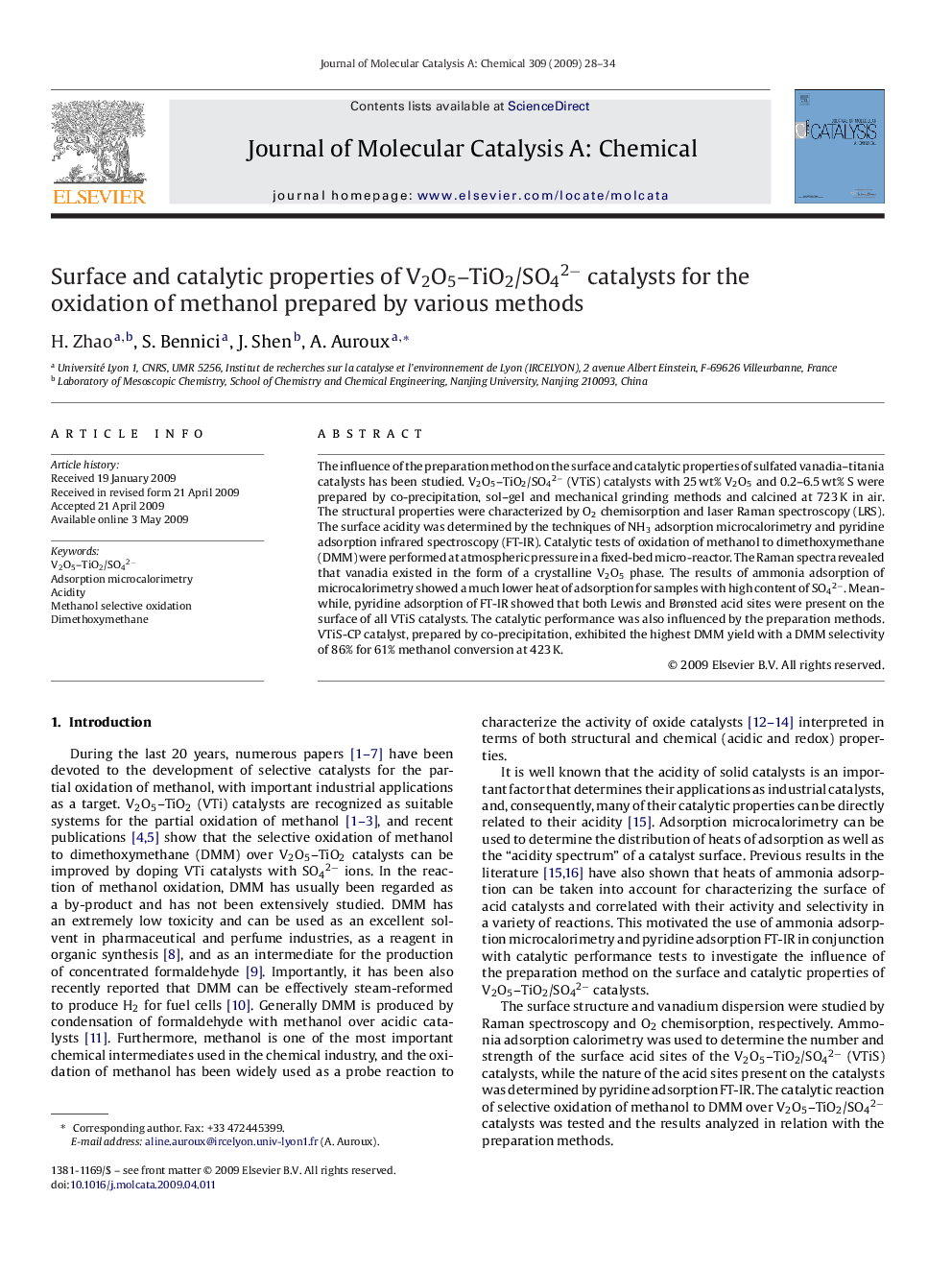| Article ID | Journal | Published Year | Pages | File Type |
|---|---|---|---|---|
| 67393 | Journal of Molecular Catalysis A: Chemical | 2009 | 7 Pages |
The influence of the preparation method on the surface and catalytic properties of sulfated vanadia–titania catalysts has been studied. V2O5–TiO2/SO42− (VTiS) catalysts with 25 wt% V2O5 and 0.2–6.5 wt% S were prepared by co-precipitation, sol–gel and mechanical grinding methods and calcined at 723 K in air. The structural properties were characterized by O2 chemisorption and laser Raman spectroscopy (LRS). The surface acidity was determined by the techniques of NH3 adsorption microcalorimetry and pyridine adsorption infrared spectroscopy (FT-IR). Catalytic tests of oxidation of methanol to dimethoxymethane (DMM) were performed at atmospheric pressure in a fixed-bed micro-reactor. The Raman spectra revealed that vanadia existed in the form of a crystalline V2O5 phase. The results of ammonia adsorption of microcalorimetry showed a much lower heat of adsorption for samples with high content of SO42−. Meanwhile, pyridine adsorption of FT-IR showed that both Lewis and Brønsted acid sites were present on the surface of all VTiS catalysts. The catalytic performance was also influenced by the preparation methods. VTiS-CP catalyst, prepared by co-precipitation, exhibited the highest DMM yield with a DMM selectivity of 86% for 61% methanol conversion at 423 K.
Graphical abstractThe influence of the preparation method on the surface and catalytic properties of sulfated vanadia–titania catalysts prepared by co-precipitation, sol–gel and mechanical grinding methods have been studied. After characterization by complementary techniques the catalysts were tested in the production of dimethoxymethane (DMM) by selective oxidation of methanol.Figure optionsDownload full-size imageDownload as PowerPoint slide
